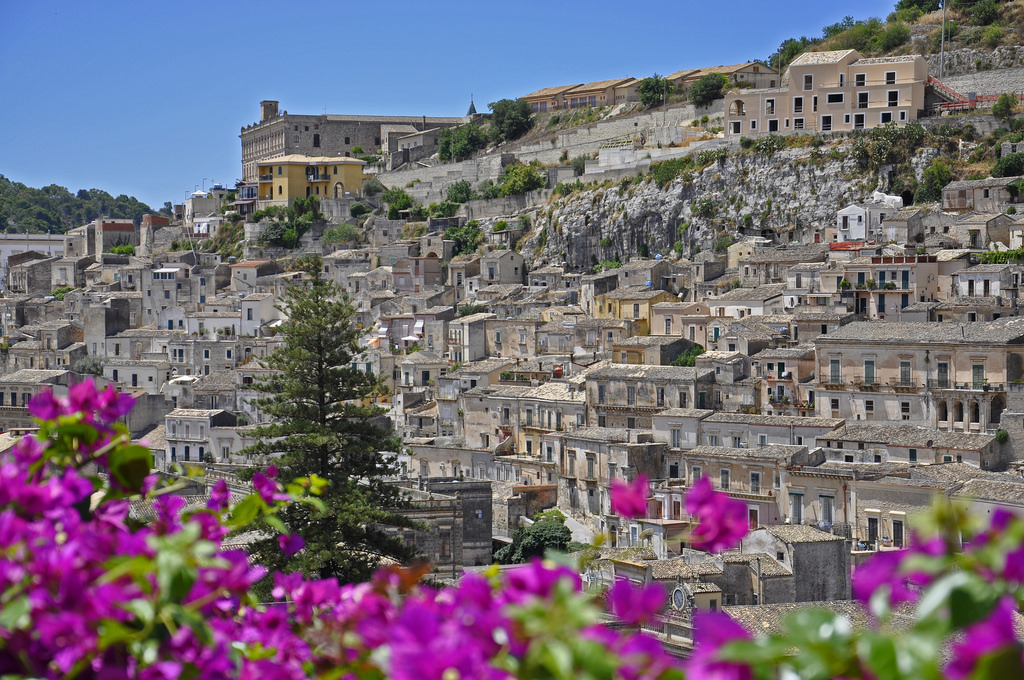On the southern slopes of Monti Iblei the town of Modica rises up.
The upper part is on a wedge of plateau,
while the lower part surrounds it in the
unusual shape of a “Y”.
It has been described as
“a town growing from the rock “:
because of its inhabited caves until a few decades ago.
After the 1693 earthquake,
it was rebuilt in Baroque style.
What to see:
One of the town’s architectural treasures is the church of San Giorgio:
a dramatic combination of architectural design,
creative vision and town-planning.
The poet Salvatore Quasimodo,
who won the prize for literature, was born here.
- San Giorgio (St George), in the upper part of Modica,
at the top of a picturesque flight of steps,
is an 18th-century church with an unusual tower facade
designed by Rosario Gagliardi.
The interior,
with nave and four side aisles,
has many artworks from the 16th and 17th-centuries.
The transept pavement has a meridian (1895).
On Corso Umberto I,
here for instance,
you will find the church of
- San Pietro (St Peter) the lower part.
An elaborate facade was made after 1693
in front there is a flight of stairs with statues of the Apostles.
The same street has the 18th-century Palazzo Tedeschi,
whose balconies have decorated 18th-century supports,
and the 18th-century Palazzo Manenti,
with a beautiful view over the high part of the town.
Furthermore,
there is another good lookout point at the Belvedere Pizzo
near the church of San Giovanni Battista.
in the same way,
another important churches are the 17th-century Chiesa del Carmine,
and the church of Santa Maria di Betlem,
with the 15th-century Cappella del Sacramento (Chapel of the Sacrament),
a particular rare example of late Gothic-Renaissance architecture.
South of Modica is the Museo civico “Fratelli Belgiorno“.
The museum occupies the 18th-century former monastery of the Padri Mercedari,
and houses archaeological finds,
fossils and early Christian art objects.
The ethnographic section,
The Museo Ibleo delle Arti e Tradizioni Popolari,
is very interesting.
It has faithfully reconstructed traditional artisan workshops and an old country farmhouse.

